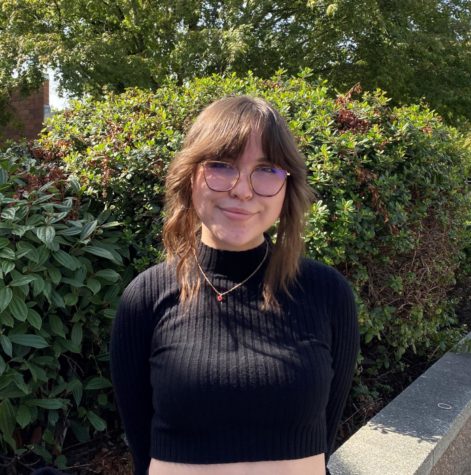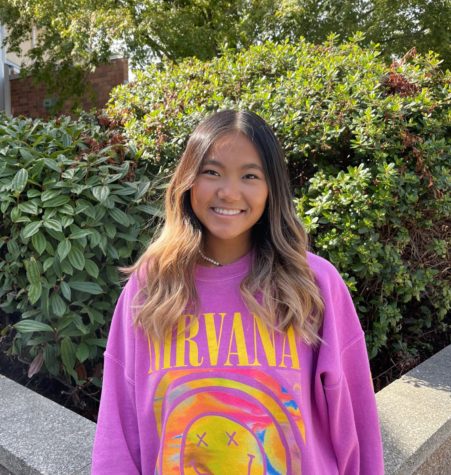Point: The school doesn’t do enough for equity.
During the months of November and December, the hallways are filled with candy cane murals and classroom doors decorated with pine trees, bedazzled with conspicuous red and green ornaments. This is to say nothing of the 15-foot “holiday tree” found in the multi-purpose room just off the cafeteria, where everyone can bask in the supposedly ambiguous holiday cheer. Sitting alone behind the glamorous non-Christmas pine tree lies a small menorah that has had all eight candles lit since it was put up the week before Hanukkah.
Schools today push for inclusivity and diversity, emphasizing their appreciation for various cultures and traditions. Although they acknowledge the existence of other cultures often, it feels as though they are just checking the boxes for equity. Historical months that recognize the struggles and oppression certain cultures in America have faced, such as Black History Month and Asian American and Pacific Islander Month are rarely even displayed on the TVs in the hallways of the main offices, those which are only seen in passing. For years, Columbus Day meant a day off for students and teachers as an opportunity to recognize the “first sight” of our “great nation.” When the holiday’s name was changed, and rightfully so, to Indigenious People’s Day, neither students nor teachers got the day off to recognize a more accurate history of our country. This year, we were in school on Oct. 11. An email was sent to parents and teachers from Dr. Michelle Reid acknowledging various holidays and events district wide, but Inglemoor did not acknowledge the holiday.
The sheer volume of involvement toward certain holidays and celebrations can make students who don’t participate in these events feel excluded. When there is little to no representation for all holidays, it can be difficult for students with varying identities and cultural backgrounds to feel represented. The emphasis on certain holidays creates an unhealthy environment for students who didn’t grow up with the same traditions. These students are supposed to feel appreciated when all they get in terms of recognition is an announcement over the intercom at 8:15 in the morning, or on the rare occasion, a short unenthusiastic speech identifying the meaning of the holiday during GMI.
The ASB and Leadership classes are in charge of displaying and recognizing various groups of students and holidays. While ASB Advisor and Event Coordinator Elizabeth Kowalski and Campus Coordinator and lead of the multicultural equity and inclusion team Ric Calhoun, push to create engaging events to support inclusivity, ASB students express little to no interest in creating events or starting recognition projects. This leaves the school with lackluster recognition of most less popular holidays and traditions. For having three full classes of students, it is reasonable to assume there would be people to create and brainstorm ideas to recognize less visible groups just as they do for popular holidays. Students in ASB have proven time after time that they have immense talent and drive for creating engaging events. It’s disappointing to see that the passion fades when equity is requested.
The student body needs to do better. If members of ASB can muster up a 15-foot, “holiday” pine tree just in time for Christmas, then there is the passion to do more for various holidays. There is a poster made for almost every sporting event, as well as a plethora of motivational quotes plastered around campus. There is time and resources to do more to uplift and create a space for various cultures and communities. ASB, staff and students need to stop checking the boxes of equity to save face or meet quotas; they need to represent all the students to create a truly inclusive and progressive environment. Equity is an expectation, not an afterthought.
Counterpoint: The school does enough for equity.
There are over 50 cultural holidays celebrated nationwide and at Inglemoor, holidays such as Thanksgiving and Chinese New Year and many in between are acclaimed. The hallways are constantly filled with assorted decorations based on the occasion. During interactive holidays such as Halloween, spooky decorations line the walls of Sherwood’s Forest, and students are encouraged to wear their costumes to school by contests and features promoted by the social media accounts run by ASB.
During the days leading up to months of recognition and holidays such as Black History Month, Lunar New Year or Diwali, the school shows its support in various ways — whether it is reliable information about the significance of a culture’s holiday or smaller gestures such as decorations in the halls. GMI features students, clubs and holidays constantly. The accumulation of acknowledgements may seem like it’s not enough, but in many aspects of the school, we promote equity and this even goes beyond the walls of our campus. Social media accounts associated with ASB constantly acknowledge cultural holidays and students of all backgrounds. These cultural clubs have used their platforms as a way to promote diversity and inclusion in an accessible way. By giving these groups a place and a time to raise cultural awareness, equity is established overall at school.
Schools acknowledge that these holidays are of cultural importance and are trying to find ways to get students excited and to feel included. But with such a diverse population of students, it’s hard to satisfy all students. Although decorations may seem like a minuscule gesture, think about the time and effort these students took to acquire the materials to make them and place them all around the school. The ASB students are brainstorming, planning and executing different projects promoting school spirit and inclusion. At ASB Senate, students have the opportunity to represent their third period class and offer their opinions about school climate and culture. This way, everyone’s thoughts have a chance to be heard. These meetings push students to help promote inclusivity at our school and improve the environment as a whole.
Students can raise awareness of their cultures through various clubs. We offer clubs such as Multicultural Club, LatinX Club, Black Student Union, South Asian Club and more. Our teachers are also encouraged to recognize cultural holidays in the classroom. In many schools, there isn’t even an equity and diversity director. We are fortunate to have Multicultural Event Coordinator Ric Calhoun to plan and organize ways to increase cultural awareness and inclusivity. From Hispanic Heritage month to Asian American Pacific Islander month, Calhoun has spent time creating slideshows with information for the TVs in Sherwood’s Forest.
Even the material we learn in our English and literature classes has expanded in the curriculum from what we were teaching years ago. Authors and creators such as Kendrick Lamar, Chimamanda Ngozi Adichie, Hiro Murai and others are discussed in classrooms today. Feminism and racial equality are all topics discussed and practiced in classrooms today. These ideas are finally being explored within the public school curriculum, and it is essential to note this aspect of equity in our school. By finally addressing these topics and learning about cultures from all over the world, our school has become more inclusive and open to all aspects of culture.
ASB Advisor and Activities Coordinator Elizabeth Kowalski has dedicated time and effort to organize slideshows, create decorations and plan events in order to promote inclusivity and diversity. ASB students have signed up for Leadership to ensure that our school acknowledges how hard students work and where they come from. It’s not easy pleasing everyone, and it’s incredibly difficult to make sure that every cultural event is celebrated. There is always room for more growth, inclusion, and acknowledgment, but the school is doing enough for equity.
























